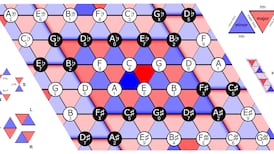The pick of the news in the world of science
Artefacts in ice
ARCHAEOLOGISTS are discovering a wealth of ancient man-made items in Canada as ice patches melt in the Mackenzie Mountains.
Already the disappearing ice has exposed 2,400-year-old spear-throwing tools, a millennium-old snare for squirrels and bows and arrows from 850 years ago (pictured).
"We're just like children opening Christmas presents. I kind of pinch myself," says archaeologist Tom Andrews, who received funds from the International Polar Year Ice Patch Study towards the work.
But they are racing against time to pick up all they can from the treasure trove. We realise that the ice patches are continuing to melt and we have an ethical obligation to collect these artifacts as they are exposed,” says Andrews. In a year or two the artifacts would be gone.
Hubble turns 20
THE HUBBLE telescope that has provided untold numbers of screensaver pictures has been in orbit for 20 years.
From its vantage point about 350 miles (560km) above Earth and circling the planet every 97 minutes, the Hubble space telescope has relayed back hundreds of thousands of images of space to enrich our understanding of the age of the universe, dark matter and the evolution of galaxies.
Since its launch, Hubble has entranced ground-dwellers with its beautiful and often awe-inspiring pictures from the universe such as the dying star above.
“To my mathematical brain, the numbers alone make thinking about aliens perfectly rational. The real challenge is to work out what aliens might actually be like."
- Physicist Stephen Hawking on the possibility of extraterrestrial aliens, which he has explored in a programme for the Discovery Channel










